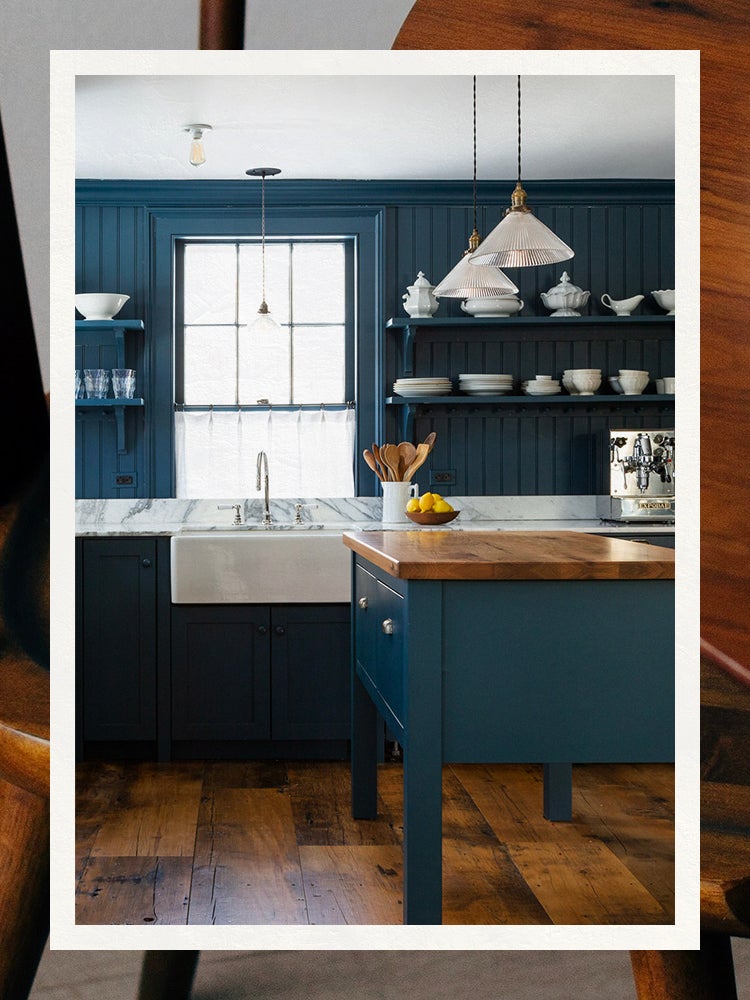Buying the Best Paint for Wood Means Nothing Without This Important First Step
And more advice from a professional contractor.
Updated Oct 12, 2018 6:24 AM
We may earn revenue from the products available on this page and participate in affiliate programs.
If you’re a DIY devotee looking for the best paint for wood, Zach Kenney is the person to talk to. The president of ZK Painting in Rhode Island has made a career out of color-coating surfaces: His first job at 14 years old was painting picnic tables; 22 years later, he’s still geeking out over chemical compositions and coverage applications. “I definitely take it a lot more seriously than the average person,” he says. “This is what I’ve spent my life doing.”
So it makes sense that this professional contractor would have a few pearls of wisdom to offer adventurous DIYers, whether they’re adding a striking hue to Shaker-style kitchen cabinets or salvaging ’70s wood paneling. To start, prep work is key. “You can build the greatest skyscraper in the world, but on a weak foundation, it will collapse,” he notes. From there, it’s really all about preference, which is why we asked Kenney, designers, and DIYers to share their favorite paints for nine different wood-related projects, tackling everything from floors to fences.
A Few Things to Keep in Mind
Types of paint: When it comes to wood, there’s nothing better than enamel paint. “There are good water-based oils and primers out there now, but a quality enamel top coat will harden into a tough upper layer,” he explains. Solvent-based enamel is stronger than latex, making it ideal for outdoor settings. But acrylics for interiors should be fine as long as you prep and prime well.
Prep: Essential first steps when painting wood include everything from lightly sanding down the surface to wiping away dust and leftover residue. Kenney’s advice: Stop trying to cut corners. “If you’re doing a project yourself, you get what you put into it. Don’t buy a cheap brush or roller,” he says. “You might save $10, but it will take you three times as long.” It’s also important to paint wood in a dry environment to prevent moisture from impacting the material’s integrity. Even before priming, Sherwin-Williams’s director of technical services, Rick Watson, suggests first testing the product’s adhesion to the surface.
Finishes: Kenney says the only two finishes to choose between are satin (the perfect soft shine) and gloss (which has an almost reflective quality), but designers often prefer a flatter eggshell surface. Brett Phillips of High Street Homes points out that, generally, the shinier the paint, the stronger and more hard-wearing it is.
Our Top Picks
For Exteriors: Fine Paints of Europe Eco Brilliant
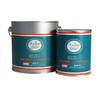
This is our go-to exterior paint. It’s the longest-lasting, single-component exterior paint on the market. The pigments in Fine Paints of Europe are much higher quality and finely ground, so when you put one thin coat of paint on, you’re getting much more protection. If I’m starting with bare wood, I’ll use the Eco water-based hybrid primer first, and then two coats of Eco satin or gloss—that is your bulletproof, premier paint job for exterior longevity. —Zach Kenney, ZK Painting
For Cabinets: Farrow & Ball Estate Eggshell
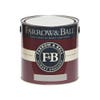
Much of the paint we specify is from Farrow & Ball—its colors have a unique depth and richness to them, not to mention the offering is great for cabinets. We use Estate Eggshell, which has a 20 percent sheen that we recommend for durability and cleanability. —Gillian Segal, Gillian Segal Design
For Trim: Sherwin-Williams Emerald Urethane Trim Enamel
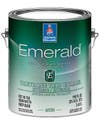
For my doors and trim, I only use Emerald Urethane Trim Enamel in a semigloss finish. It’s a urethane-modified alkyd that gives you the durability of a urethane with the flow and leveling of an alkyd, all wrapped up in a water-based coating. With its excellent flow and leveling characteristics, this would be ideal for finishing trim-type areas. —Rick Watson, Sherwin-Williams
For Stairs: Clare Trim Paint
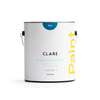
I wanted to get rid of the ’90s orange wood vibe of my stairwell, so I cleaned the stairs really well and then did a light sanding. (If I were to do this project again, I definitely would have spent more time on this part and used a liquid deglosser.) Then I used Clare’s Trim Paint in Blackest on the banisters, railing, and risers, because I love the color. It’s held up really well. —Sandy Jandu, Ellee Home
For Floors: Rust-Oleum Ultra Cover Semi-Gloss Premium Paint
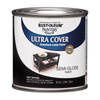
Painting or staining hardwood is a great budget-friendly option when compared to laying down new flooring. Instead of sanding down to remove imperfections, a marine-quality latex enamel paint with a slight sheen will hide nicks and scuff marks, which is convenient for floors that we see in older Brooklyn homes. A semigloss finish will attract the light, especially if done in a darker color, which helps to both brighten and ground the space. —Holly Waterfield, Brooklyn Home Company
For Doors: Sherwin-Williams Emerald Interior Acrylic Latex Paint
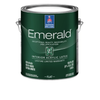
For our guest bathroom, we painted a reclaimed door in a satin-finish vintage green called Isle of Pines from Sherwin-Williams. We plugged the old hardware holes and filled other nicks with wood filler, then sanded the entire thing really well so it was ready for a fresh coat of paint. We weren’t exactly sure what kind of wood it was, but it was nothing fancy—our best guess was pine. It was definitely something we needed to paint rather than stain. —Barry Bordelon and Jordan Slocum, Brownstone Boys
For Walls: Clare Interior Paint
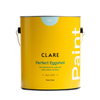
I am currently in the process of painting wood paneling in a living room—a personal DIY project. I’m using Interior Paint from Clare in the color Whipped. First, I prepped all of the lines in the paneling with a brush and used a roller for the rest. It only took two coats to cover the unsightly dark wood paneling—such a great transformation! Not only is Clare an awesome product, but its Painter’s Washi Tape is also one of my favorites, along with its metal tray—must-haves for any painting project. —Michelle Lisac, Michelle Lisac Interior Design
For Furniture: Fine Paints of Europe Eurolux

For painting wood, oil is more durable than latex, although less environmentally friendly. The low-VOC Eurolux from Fine Paints of Europe is a good alternative. Our Pound Ridge kitchen is painted in it, as is the bed in our primary bedroom. We like using a gloss or satin finish depending on the intended application. Gloss finishes show all the imperfections, so it’s far trickier, but satin gives a pretty sheen and reflects the light subtly. —Keren Richter, White Arrow
For Fences: Benjamin Moore Regal Select Exterior Paint

Several factors can determine the best stain or paint for outdoor wood fences. First, identify the type of wood: Raw cedar and red oak have a tannin within them, which could leach through your finish, so it is best to choose an oil stain or paint that has a better chance of preventing this unsightly discoloration. For a fence that has been previously coated, or if the wood is pine, then an acrylic would be a good choice. As for method of application, brush, roller, or spray—are all acceptable. I would recommend that when you spray wood fencing, immediately use a brush to push the stain or paint into the grain of the wood. This technique is called back brushing. —Mike Mundwiller, Benjamin Moore
Ask Domino
Do I always need to use a primer when painting wood?
It’s best practice to apply a primer to wood before painting for two reasons: It ensures a smooth surface and hides knots, grain, and imperfections for an even finish. The tannins in wood can leach through paint, so make sure your primer and top coat match. For best results, Phillips recommends tinting primer 50 percent with your color choice; for darker looks, use a gray primer. “If you are painting oak or knotty alder, you might just need to embrace the texture and imperfections of the wood,” he adds. “It can be hard to fully remove any knots or grain.”
Can I use wall paint on wood furniture?
Watson’s short answer: no. “Standard wall paints are not designed to take the abuse a piece of furniture receives,” he says. The best paints for wood, explains Watson, are usually made up of water-based acrylics, acrylic-alkyds, and even urethane-modified alkyds.
How We Vetted These Products
Every product in a Domino guide meets these criteria:
- They blend form and function. We believe the best-designed products reflect your personal style and are a joy to use.
- They’re expert approved. In addition to our team of editors, we tap a range of designers, makers, renovators, and all-around knowledgeable people to share their intel.
- They’re endorsed by people who actually own them. We pay close attention to real reviews to know that they pass the test IRL.
